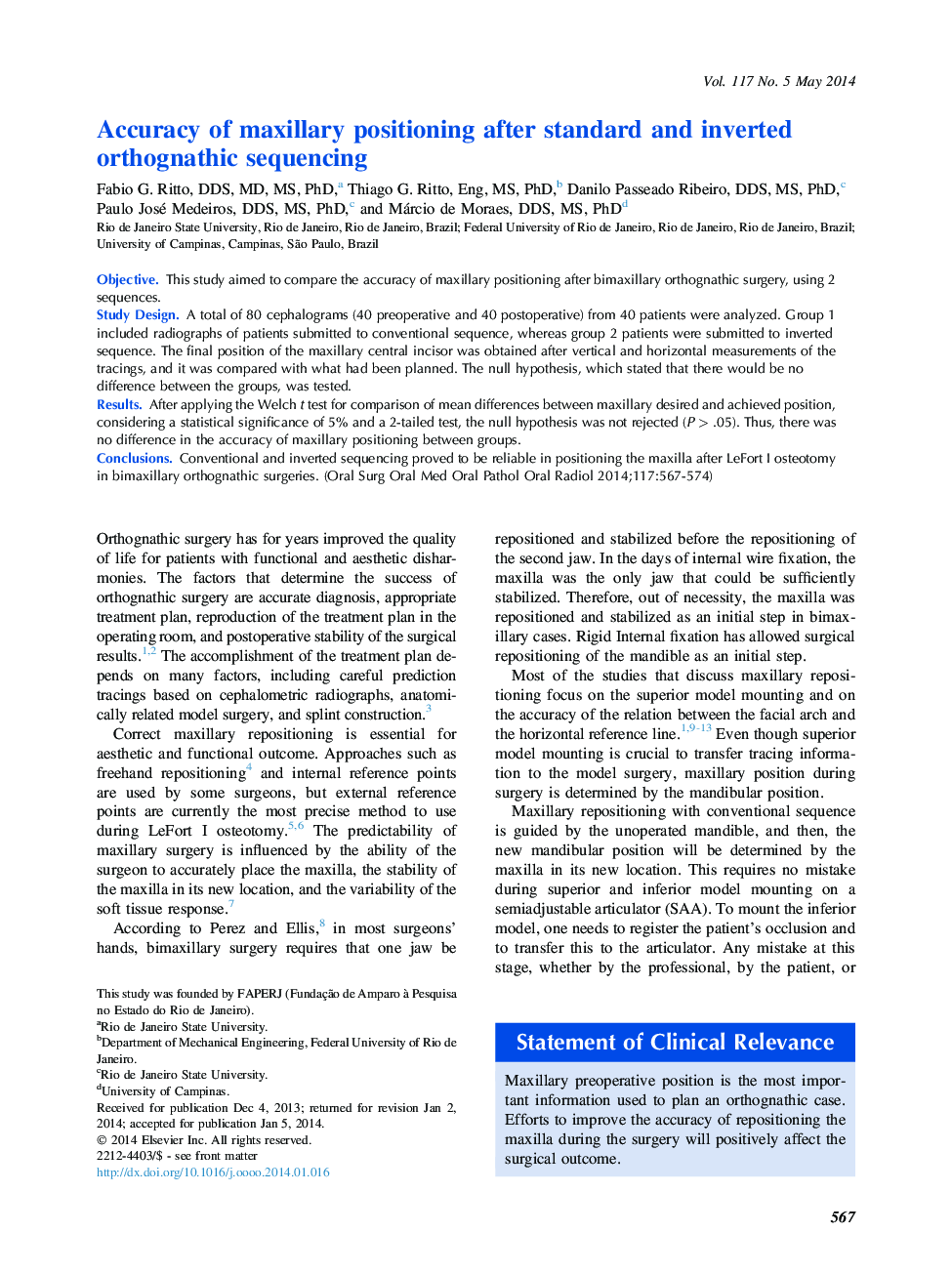| Article ID | Journal | Published Year | Pages | File Type |
|---|---|---|---|---|
| 6057360 | Oral Surgery, Oral Medicine, Oral Pathology and Oral Radiology | 2014 | 8 Pages |
ObjectiveThis study aimed to compare the accuracy of maxillary positioning after bimaxillary orthognathic surgery, using 2 sequences.Study DesignA total of 80 cephalograms (40 preoperative and 40 postoperative) from 40 patients were analyzed. Group 1 included radiographs of patients submitted to conventional sequence, whereas group 2 patients were submitted to inverted sequence. The final position of the maxillary central incisor was obtained after vertical and horizontal measurements of the tracings, and it was compared with what had been planned. The null hypothesis, which stated that there would be no difference between the groups, was tested.ResultsAfter applying the Welch t test for comparison of mean differences between maxillary desired and achieved position, considering a statistical significance of 5% and a 2-tailed test, the null hypothesis was not rejected (P > .05). Thus, there was no difference in the accuracy of maxillary positioning between groups.ConclusionsConventional and inverted sequencing proved to be reliable in positioning the maxilla after LeFort I osteotomy in bimaxillary orthognathic surgeries.
